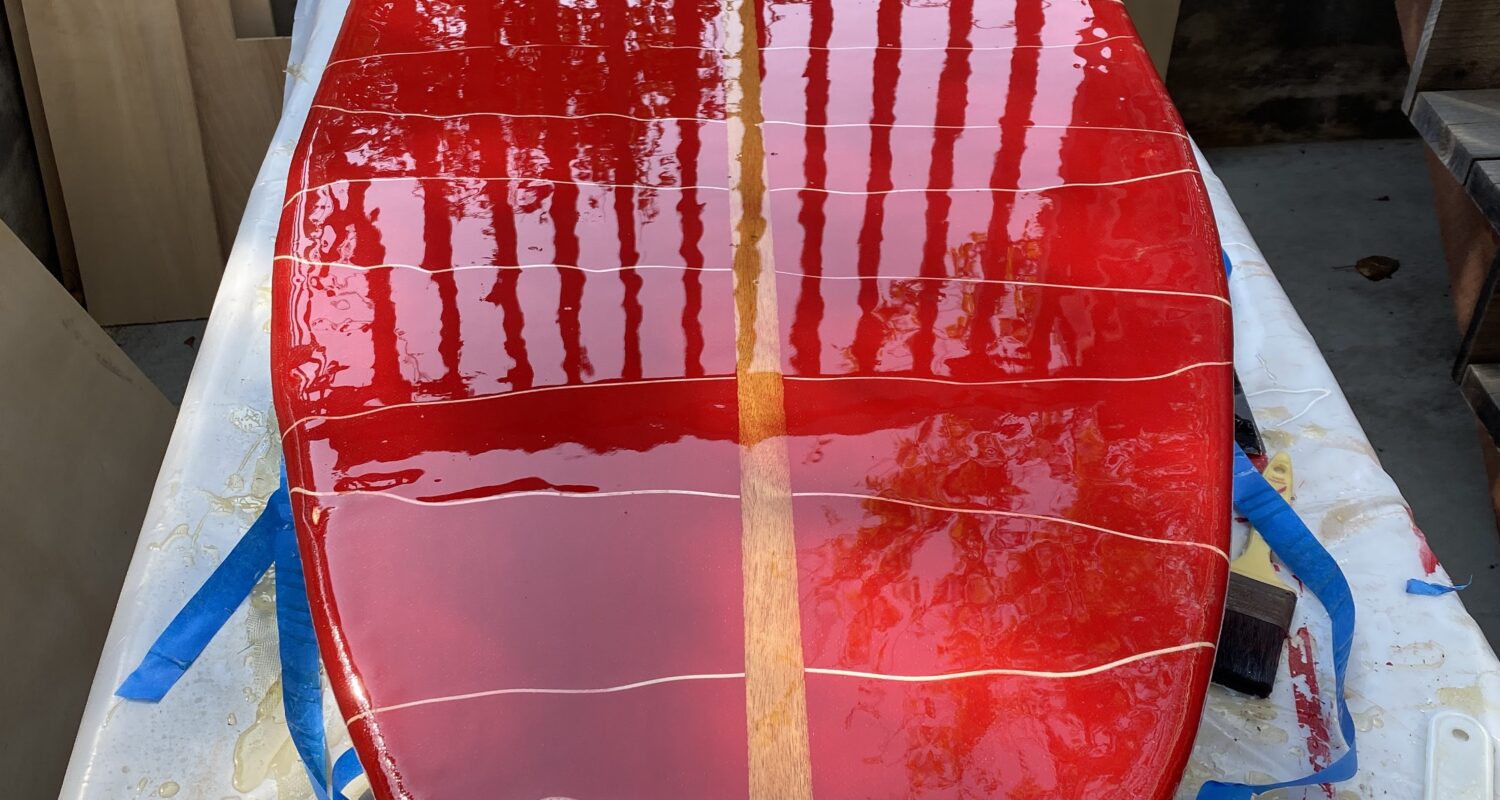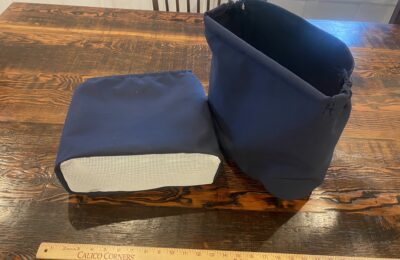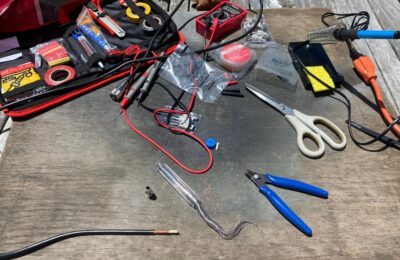Summary: I shaped, decorated, and encased in fiberglass, an adult-sized(!) wooden skimboard. On a strategic basis, my key lesson was to be thoughtful and well-planned about the components of a lamination or surface treatment. On a tactical basis, I learned (again) that beautiful things are difficult to make and require the expenditure of time and money.
A lack of any first-hand experience working with fiberglass was a glaring hole in the ‘guy fixing up an old sailboat’ CV I am attempting to build this year. I have two different Don Casey books – Complete Illustrated Sailboat Maintenance and This Old Boat. I like Casey’s approach of encouraging owners to do their own work except when safety of dollars say otherwise. To learn about fiberglass, he suggests one try to make an instrument housing out of a Cool Whip tub. That didn’t really stir my soul.
Earlier this summer, my boys took up skim boarding at our local beach. This guy is their YouTube hero:
My skim boarding game is non-existent, and I soon learned that most commercially available boards are aimed at boys hovering between 90-140lbs. I weigh, shall we say, a tad bit more than those numbers.
Thus the need for a proper dad-sized skimboard intersects with my desire to do something relatively easy with fiberglass. I referred to YouTube, and began my design. Boards normally either have a foam or plywood core. Plywood is a more familiar material and easier to source and work, so that is what I chose. I jig-sawed a profile and router-ed the top edge round. I actually was making two boards at once, a second to give to another friend-dad who was nobly trying to learn to skimboard with his sons.
I set about making a “cool design” for it with what I had handy (hmmmmmm). I stained the bottom with some oil-based Minwax stain, and I painted the top with some semi-gloss red Rust Oleum I had. I taped over a centerline stripe to create a faux stringer look and added some white highlights. More Jackson Dollop than Jackson Pollock.
I was pleased with the outcome.
At this point, I stopped to think. Perhaps this should have happened earlier, you say. Would the epoxy stick to my latex paint? What about my oil based stain? I had purchased some TotalBoat epoxy, and a roll of 6oz fiberglass cloth. I did some more research and didn’t get any clear answers, except that it would probably work fine if the paint was well-adhered and if I cleaned out any excess stain with some acetone. I wiped the whole board down.
I found a few more videos about surfboard (and skimboard) glassing on YouTube. For as many areas of DIY work in which sailors need to build skills, the aspirational surfboard maker needs only a few.
“Glass” laid out. It’s called fiberglass, but is really just woven plastic.
The tricky part is getting the overhang/lap to lay flat nicely. You goop on the epoxy and wet the fabric, and then smear the lap edge onto the opposite side of the board.
Wait for the epoxy to cure, then do the opposite for the other side.
One must patiently continue to smear the fabric back onto the board until the epoxy cures enough to remain adhered.
I was left with a bumpy mess with a number of air pockets. I had to go back and sand and smooth out many areas. Lots of sanding powder, lots of acetone to wipe it off.
I decided that fiber-glassing was like hanging drywall this way. Have you ever seen an amateur hang drywall? He winds up covered in fine white powder from all the sanding. Have you ever seen a professional drywall guy covered in white powder? Almost never, because if he can handle his taping knife with proper skill, there won’t ever be a need to sand anything.
Next, a gloss coat layer. Both for cosmetics and performance, one wants the bottom of his skimboard to be shiny slippery smooth. Mine has some bumpy “fisheye” areas and inconsistencies, but it’s pretty slick.
A final gloss coat on the topside and then an application of traction pads. Surf wax would have been another alternative for foot grip, but really, it’s an icky product that sticks in your armpit when you carry a board on a hot day.
For the traction pads, I bought a boat flooring product made from EVA foam.
Ambitious, somewhat garish, replete with imperfections (looks in mirror) The board I mean.
Next up is some product testing. Hopefully I’ll get in a few runs without blowing out an ACL or herniating a disc. Mostly joking about that. Mostly. Maybe I’ll also find a necessary fiberglass project on the boat utilizing some part of my new skill-set.
Other lessons learned, may be particular to my situation:
1. The best time to start swabbing epoxy is about 20 minutes before your neighbor begins his bi-weekly lawn blowing, sending great clouds of dust to settle onto your project.
2. If you’re not sure if the epoxy is cured, just ask one of the half dozen flies who have landed in the glue. You have to listen closely to hear what they are saying.
3. If you’re bending over to try to lap the fiberglass cloth under your skimboard, don’t wear a baseball hat or anything else on your head. That way, when a dozen or so hairs at the leading edge of your incipient male-pattern baldness graze the epoxy on the dropcloth beneath the skimboard you are wetting out, you obtain chemically-bonded two part hair gel. You get to huff acetone while you wipe out the glue and think about the need to humble oneself while learning a new skill.
It’s awesome.



